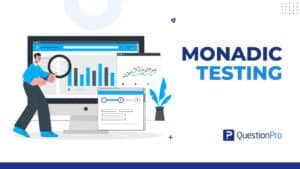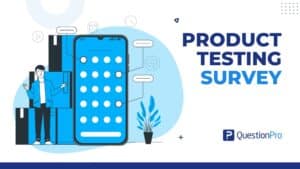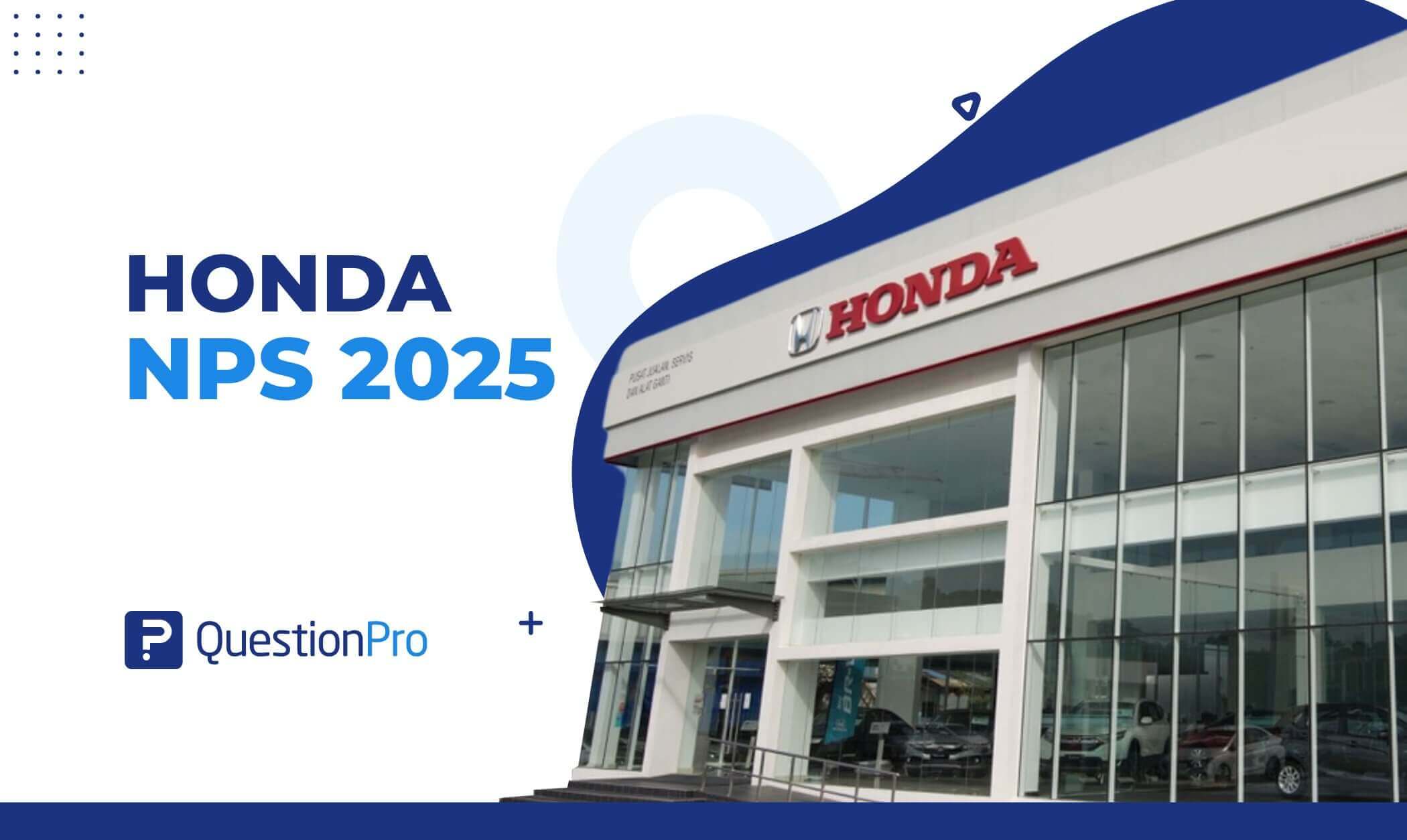
In the automotive industry, customer loyalty and trust are critical to long-term success, but not every brand gets it right. Many companies focus heavily on sales and product features while overlooking the overall customer experience. Honda, however, stands out as a brand that consistently builds strong relationships with its drivers.
In today’s article, we’ll take a closer look at Honda’s Net Promoter Score (NPS), explore what’s driving their high customer satisfaction, and share practical insights on how other automotive brands can start measuring NPS and improving the customer journey.
What is NPS?
Net Promoter Satisfaction Score (NPS) is a simple way for companies to measure how happy and loyal their customers are. It’s based on one main question:
“On a scale of 0 to 10, how likely are you to recommend our product/service to a friend or colleague?”
That’s it! Just that one question can tell a lot about how people feel about a business. Once customers answer that question, they are grouped into three categories:
- Promoters (score 9-10)
These are the happy customers who love your product or service. They’re likely to tell others about it and help your business grow.
- Passives (score 7-8)
These customers are satisfied but not excited. They’re not likely to promote your business, but they’re not unhappy either.
- Detractors (score 0-6)
These are unhappy customers who might speak negatively about your business and could hurt your reputation.
The NPS score is calculated like this:
NPS = % of Promoters – % of Detractors
The score can range from -100 to +100.
- A positive score (above 0) is good.
- A score of 50 or more is excellent.
- A negative score means more people are unhappy than happy, and that’s a warning sign.
NPS helps businesses see how their customers really feel and shows if they’re building strong connections. It’s simple to use, easy to understand, and gives valuable feedback that can lead to meaningful improvements.
Honda NPS Performance Score
Honda stands out in the automotive industry with a strong Net Promoter Score (NPS) of 57, significantly outperforming the industry average of 41, according to QuestionPro’s Q1 2025 Benchmarking NPS and CSAT Report. This impressive score highlights Honda’s solid customer loyalty and satisfaction.
Here’s a breakdown of Honda’s customer feedback:
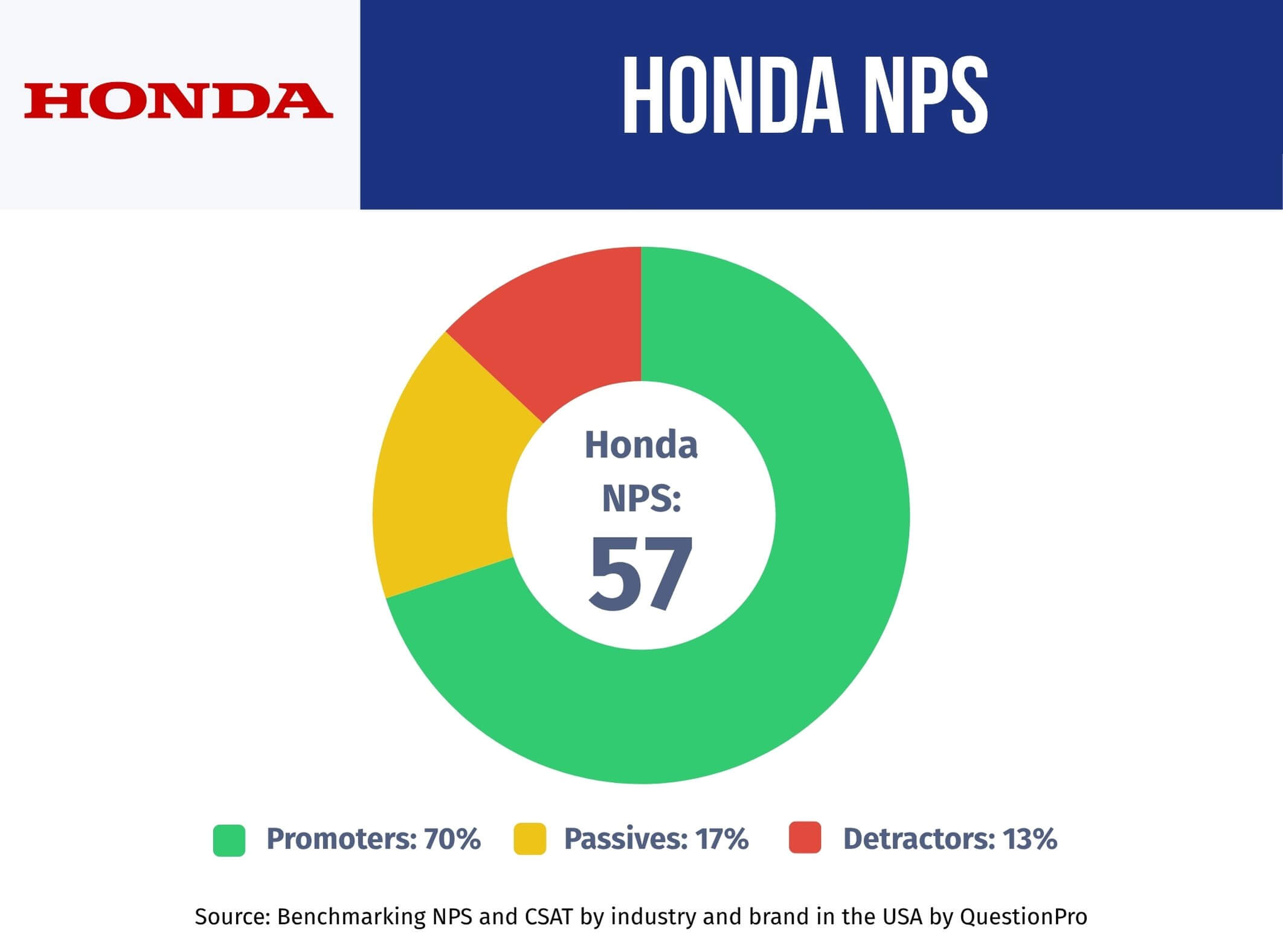
- Promoters: 70%
- Passives: 17%
- Detractors: 13%
With a large majority of its customers in the Promoter category and a relatively low percentage of Detractors, Honda is clearly building strong relationships with its drivers. This positive sentiment reflects well on the brand and its consistent delivery of quality and reliability in a highly competitive market.
How Honda NPS Score Compares to Automotive Industry Benchmarks?
Honda is performing well above the automotive industry average when it comes to customer loyalty and satisfaction. According to Honda’s Net Promoter Score (NPS) of 57, the brand significantly outpaces the industry average of -41, based on QuestionPro’s Q1 2025 Benchmarking NPS and CSAT Report.
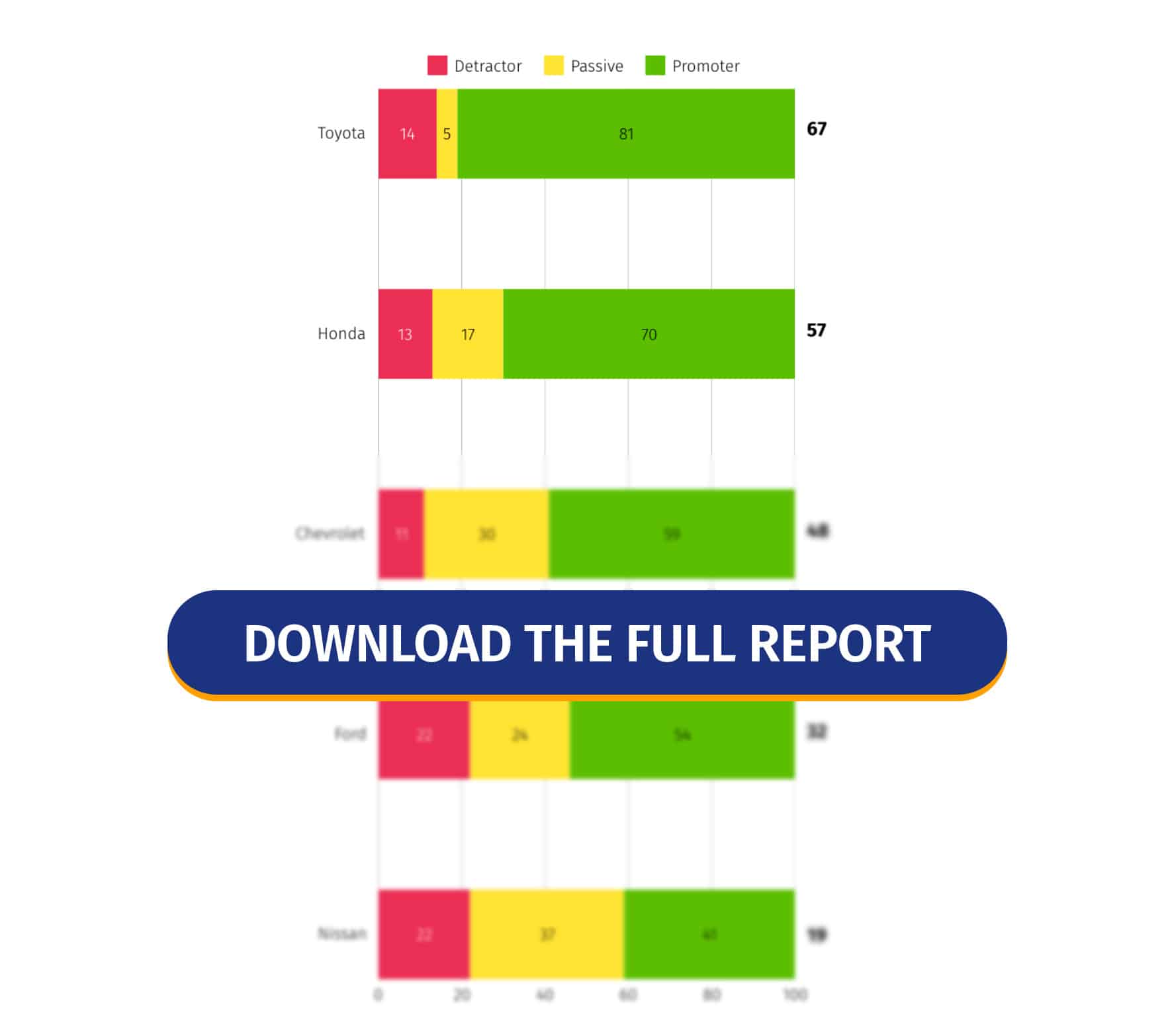
This impressive gap highlights Honda’s strong customer relationships. With 70% of respondents identified as Promoters and only 13% as Detractors, the brand enjoys a high level of trust and advocacy among its drivers.
In an industry where many brands struggle to earn positive NPS scores, Honda’s performance stands out. These results suggest that Honda not only meets but often exceeds customer expectations, setting a high bar for others in the automotive space.
These insights are based on feedback from 1,000 participants in QuestionPro’s Q1 2025 report, offering a clear view of how customers feel about top airline brands.
What Helps Honda Hold a Higher NPS?
Honda’s strong Net Promoter Score (NPS) is driven by consistent customer satisfaction and brand loyalty. Based on recent customer feedback, here are five key reasons why Honda continues to earn high marks from its drivers:
1. Exceptional Customer Service
People often mention how helpful and genuine the staff are at Honda service centers. Whether it’s a service advisor, technician, or even someone at the front desk, personal care and honesty really stick with customers.
2. Reliable and Long-Lasting Vehicles
Honda cars are often praised for their durability and low maintenance needs. Owners report that even older models like the 2006 CR-V and Odyssey continue to run smoothly, reinforcing the brand’s reputation for reliability.
3. Affordable Pricing and Good Value
Honda vehicles are considered budget-friendly without compromising on quality. Customers often mention fair prices, economical fuel usage, and long-term value, making Honda an appealing choice for a wide range of drivers.
4. Strong Design and Functionality
Many drivers appreciate Honda’s blend of smart design and everyday practicality. From scooters to sedans and SUVs, the vehicles are described as:
- Well-built
- Functional and
- User-friendly
5. Consistency Across Locations
Whether it’s in Florida, Sussex, or Alberta, Honda delivers a consistent experience. From smooth leasing processes to personalized support for Motability users, Honda’s nationwide customer care builds strong brand loyalty.
These strengths help Honda earn high praise from its customers—and keep its NPS far above the industry average.
How to Measure and Improve Your NPS?
Net Promoter Score (NPS) is a powerful way to track customer loyalty, and with QuestionPro, measuring and improving your NPS is simple and effective. Here’s how you can do it:
1. Create and Send NPS Surveys
Start by using QuestionPro’s NPS survey template or create your own. The key question is:

You can send the survey through email, SMS, QR codes, or even embed it on your website.
2. Analyze the Results Automatically
Once responses come in, QuestionPro calculates your NPS score automatically. You’ll see the breakdown of:
- Promoters (9–10)
- Passives (7–8)
- Detractors (0–6)
You also get easy-to-read dashboards and reports that help you spot trends and pain points.
3. Read Comments and Follow Up
Beyond the score, pay close attention to open-ended feedback. QuestionPro lets you tag comments, filter by sentiment, and follow up with customers directly, especially the Detractors, to learn what went wrong and how to fix it.
4. Segment and Compare
With QuestionPro, you can compare NPS by region, product line, employee, or customer group. This helps you understand where you’re doing well and where improvements are needed.
5. Act on Insights and Close the Loop
Use the insights to improve your product, service, or customer experience. And most importantly, close the loop: reach out to unhappy customers, thank the Promoters, and keep the conversation going.
With QuestionPro, you’re not just measuring NPS, you’re turning customer feedback into real action. It’s a smart way to build stronger relationships and boost loyalty over time.
Stay Ahead with the Latest NPS Insights
Check out the Q1 2025 NPS Benchmark Report to find out how leading brands are earning customer loyalty.
Ready to improve your NPS? Reach out to the QuestionPro experts for custom tips on improving customer satisfaction.




